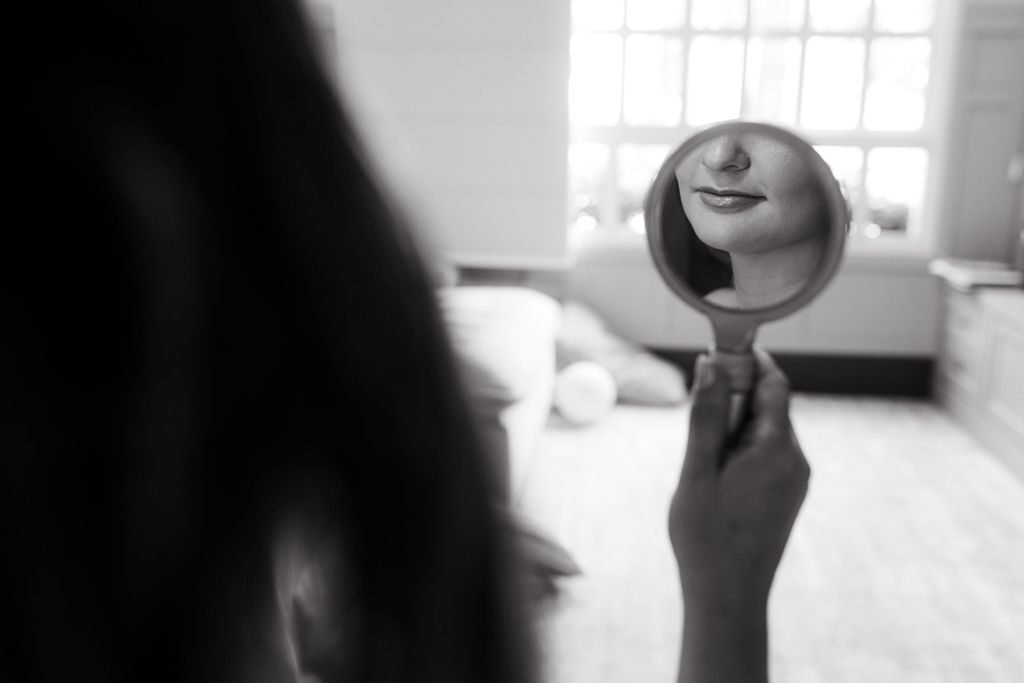The concept of beauty has undergone a significant transformation throughout history, shaping societal perceptions and influencing individual self-image. From historical influences to modern media impact, beauty standards have evolved, leaving a profound mark on economic and social landscapes. This article explores the multifaceted nature of beauty and its profound influence on society.
Key Takeaways
- Beauty standards have been shaped by historical influences, cultural shifts, and media impact.
- Psychological effects of beauty standards play a significant role in shaping individual self-image.
- Body positivity and self-acceptance are important factors in countering negative beauty influences.
- Consumer behavior and representation in the beauty industry have economic and social implications.
- The beauty industry’s influence extends to shaping social norms and perceptions of diversity.
The Evolution of Beauty Standards

Historical Influences on Beauty Ideals
Throughout history, beauty standards have been deeply influenced by the socio-economic conditions and prevailing cultural norms of the time. The Renaissance period, for instance, celebrated voluptuous figures as symbols of wealth and fertility, a stark contrast to today’s lean and athletic body ideals.
Fashion and beauty were not only a means of personal expression but also a reflection of one’s social status. The use of cosmetics and elaborate hairstyles was often reserved for the upper echelons of society, indicating both leisure and wealth.
- Ancient Egypt revered symmetry and youthfulness.
- In Imperial China, small feet were considered the epitome of beauty.
- Victorian England valued a pale complexion, often achieved through the use of lead-based makeup.
The fluidity of beauty standards over time suggests that what is considered attractive is largely a social construct, subject to change as society evolves.
Cultural Shifts in Beauty Perceptions
The concept of beauty is not static; it is a dynamic tapestry woven from the threads of time and culture. Cultural shifts have significantly altered the landscape of beauty perceptions, leading to a more inclusive and varied understanding of what it means to be beautiful.
- The globalization of culture has introduced a myriad of beauty ideals, often blending Western influences with traditional values.
- Social media has democratized beauty, allowing individuals to shape and share their own standards.
- Movements such as body positivity have challenged long-standing norms, advocating for acceptance of all body types.
The rise of individualism in modern societies has further fueled the diversification of beauty ideals, empowering people to define beauty on their own terms, rather than conforming to a singular standard.
This evolution reflects a broader societal trend towards valuing diversity and the uniqueness of the individual. The recognition of personal identity as a component of beauty marks a significant departure from the one-size-fits-all approach that once dominated cultural narratives.
Impact of Media on Beauty Standards
The media has long been a powerful force in shaping societal beauty standards. Through advertising, film, television, and, more recently, social media, the images presented to the public often carry implicit messages about what is considered attractive.
The proliferation of digital platforms has amplified the reach and influence of beauty ideals. These platforms not only showcase a narrow spectrum of beauty but also perpetuate rapid changes in what is deemed fashionable or desirable.
Accessibility to various forms of media means that people are constantly bombarded with these ideals, which can lead to a homogenization of beauty standards globally:
- The dominance of Western beauty ideals in global media
- The rise of ‘influencer’ culture and its impact on beauty trends
- The speed at which new beauty standards emerge and fade away
The constant exposure to media-defined beauty can have profound effects on individual self-esteem and body image. It is crucial for media consumers to cultivate a critical eye, recognizing the constructed nature of these standards and seeking out diverse representations of beauty.
Beauty and Self-Image

Psychological Effects of Beauty Standards
The relentless pursuit of an often unattainable beauty ideal can lead to a myriad of psychological challenges. The internalization of these standards has been linked to issues such as low self-esteem, anxiety, and depression. The pressure to conform can be particularly intense among younger individuals, who are still developing their sense of self.
Beauty standards not only affect how individuals perceive themselves but also how they are perceived by others. This can influence personal and professional relationships, creating a cycle of validation or rejection based on appearance.
- The comparison with peers and media portrayals can exacerbate feelings of inadequacy.
- Social media platforms often amplify these comparisons, presenting a skewed reality.
- Seeking validation through appearance can lead to an overemphasis on physical attributes over other qualities.
The quest for beauty can overshadow the importance of mental well-being, leading to a society where appearance takes precedence over personal growth and happiness.
Body Positivity and Self-Acceptance
Body positivity and self-acceptance are vital in counteracting the often unrealistic beauty standards perpetuated by society and media. Embracing one’s unique features and rejecting the notion of a single beauty ideal can lead to a healthier self-image and improved mental well-being.
Self-acceptance is not just about contentment with one’s appearance; it’s a journey that involves:
- Recognizing and appreciating the diversity of body types
- Challenging negative thoughts and behaviors related to body image
- Cultivating a supportive community that celebrates all forms of beauty
The shift towards body positivity marks a significant cultural change, advocating for inclusivity and respect for individual differences. It’s a movement that encourages people to love themselves as they are, and to recognize that beauty is not a one-size-fits-all concept.
Influence of Beauty Trends on Self-Perception
The pervasive nature of beauty trends often dictates how individuals perceive themselves, both in the mirror and within the social fabric of their communities. The quest for aesthetic alignment with these trends can profoundly affect one’s self-esteem and self-worth.
Beauty trends, emerging from various sources such as celebrities, social media influencers, and fashion runways, create a dynamic template of ‘ideal’ looks that many strive to emulate. This emulation can lead to a constant state of self-evaluation and comparison:
- The pursuit of the latest beauty fad
- The pressure to maintain a certain appearance
- The financial and emotional investment in cosmetic products and procedures
The internalization of these beauty standards can lead to a homogenized view of attractiveness, where individuality is often overshadowed by the desire to fit in.
It is crucial to recognize the cyclical nature of beauty trends and their potential to shape not only how we see ourselves but also how we are perceived by others. As these trends evolve, so too does the collective self-image of society, often leaving lasting impressions on the cultural psyche.
Economic and Social Impacts of Beauty Industry

Consumer Behavior and Beauty Products
The allure of beauty products extends beyond mere vanity; it taps into the deep-seated desire for self-improvement and social acceptance. Consumer spending on beauty products reflects not just a quest for aesthetic enhancement but also a complex interplay of psychological factors. The decision to purchase a particular lipstick or moisturizer often hinges on a mix of personal preference, brand loyalty, and the influence of social media trends.
Marketing strategies have evolved to exploit these consumer behaviors, with companies investing heavily in advertising campaigns that promise transformative results. The effectiveness of these campaigns is evident in the:
- Persistent growth of the beauty industry
- Introduction of innovative products catering to a diverse consumer base
- Shift towards personalized beauty solutions
The beauty industry thrives on the promise of perfection, subtly shaping consumer aspirations and expectations. This relentless pursuit often leads to a cycle of continuous consumption, as individuals seek the next best product that holds the key to their ideal self-image.
Representation and Diversity in Beauty Marketing
The beauty industry has long been criticized for its narrow portrayal of beauty, often centered around a homogenous set of characteristics. The push for representation and diversity in beauty marketing is not just a trend, but a movement towards inclusivity. This shift is not only ethical but also economically savvy, as brands that embrace diversity resonate with a wider audience.
Inclusivity in beauty advertising has become a key factor in brand success. Consumers are increasingly supporting companies that represent a broad spectrum of beauty, including different ethnicities, body types, ages, and genders. The following points highlight the importance of this evolution:
- A reflection of real-world demographics in marketing campaigns
- Empowerment of consumers through relatable and diverse beauty ambassadors
- The dismantling of traditional beauty standards by showcasing a variety of aesthetics
The beauty industry’s embrace of diversity is not just about expanding the market; it’s about reshaping societal norms and fostering a culture of acceptance. By promoting a wider range of beauty ideals, companies are not only aligning with ethical values but are also cultivating a loyal customer base that feels seen and valued.
Beauty Industry’s Influence on Social Norms
The beauty industry wields a significant influence on social norms, often setting the standards by which individuals, particularly women, are judged. The pervasive nature of beauty advertising creates a ubiquitous standard that many feel pressured to meet, leading to a homogenization of aesthetic values across diverse populations.
Consumerism is deeply intertwined with the beauty industry’s impact on society. The relentless promotion of new beauty products encourages a cycle of consumption that is predicated on the pursuit of an ever-evolving ideal of perfection:
- The drive to adhere to current beauty trends
- The association of beauty with success and happiness
- The economic pressure to invest in beauty products and services
The normalization of cosmetic procedures and the rise of ‘influencer’ culture have further cemented beauty norms, making them more rigid and pervasive. This has significant implications for individual self-esteem and societal values, as the line between natural and enhanced beauty becomes increasingly blurred.
As the beauty industry continues to grow, its influence on social norms is likely to expand, shaping not only how beauty is perceived but also how it is valued in the context of social interaction and personal identity.
Conclusion
In conclusion, the transformative power of beauty is a complex and multifaceted phenomenon that shapes perceptions and influences society in profound ways. From the portrayal of beauty in media to the impact of beauty standards on individuals, it is evident that beauty plays a significant role in shaping our social and cultural landscape. Understanding the dynamics of beauty and its influence is crucial for promoting inclusivity, diversity, and positive self-image in our society.
Frequently Asked Questions
How have historical influences shaped beauty ideals?
Historical influences, such as art, literature, and societal norms, have played a significant role in shaping beauty ideals throughout different time periods.
What are the psychological effects of beauty standards on individuals?
Beauty standards can have a profound impact on individuals’ self-esteem, body image, and mental well-being, often leading to feelings of inadequacy and low self-worth.
How does the beauty industry influence consumer behavior?
The beauty industry employs various marketing strategies and trends to influence consumer behavior, often leading to increased spending on beauty products and services.
Why is representation and diversity important in beauty marketing?
Representation and diversity in beauty marketing are crucial for promoting inclusivity and empowering individuals of all backgrounds to feel valued and recognized within the beauty industry.
What role does the media play in shaping beauty standards?
The media has a significant influence on perpetuating beauty standards through advertising, entertainment, and social media, often creating unrealistic expectations and ideals.
How can individuals promote body positivity and self-acceptance in today’s beauty culture?
Individuals can promote body positivity and self-acceptance by challenging beauty norms, embracing diversity, and advocating for inclusive representations of beauty in media and society.



